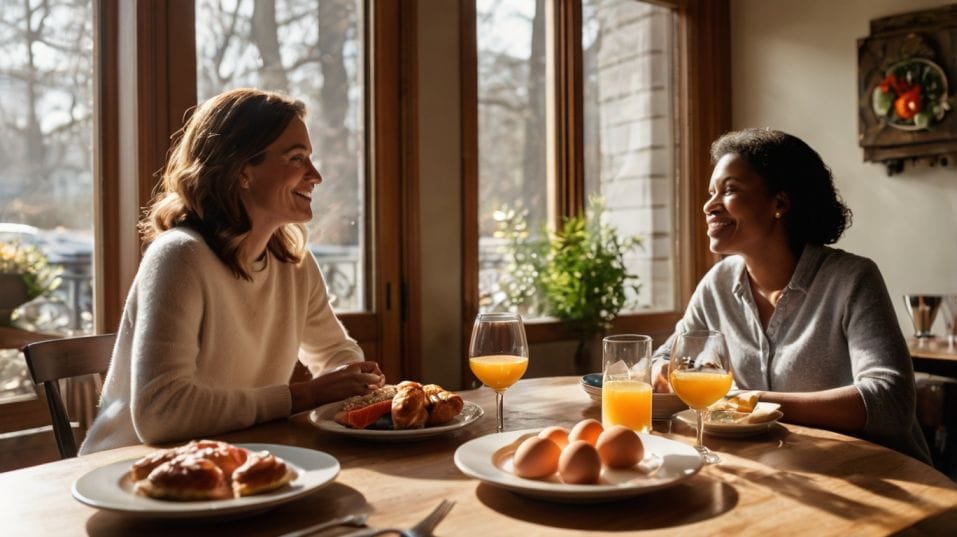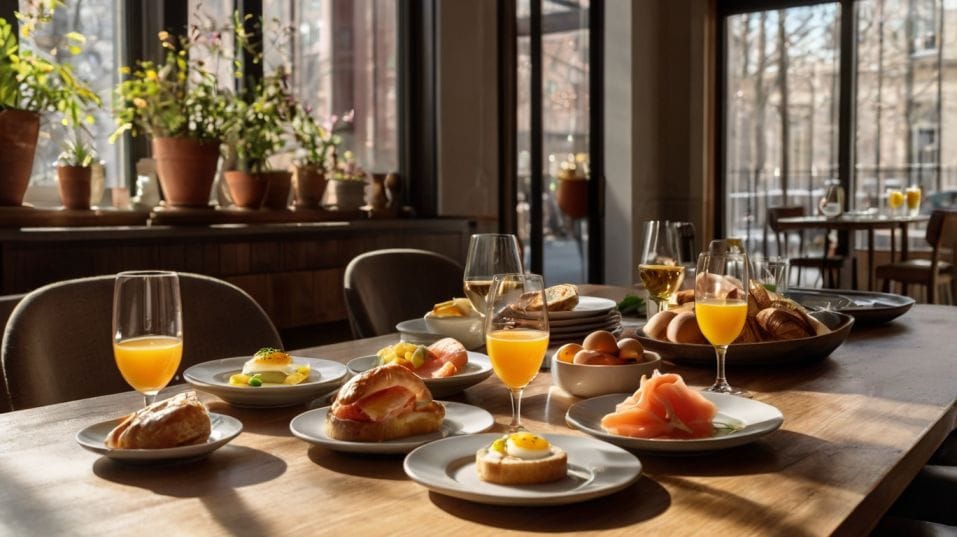Brunch Wines That Aren’t Just Bubbly
Ditch the mimosa rut. Learn how to choose smarter wines for brunch and build tasting skills that level up your wine confidence—bite by bite.

What if brunch could be your secret weapon for learning wine? Forget defaulting to mimosas. Brunch is a playground of flavors—rich, bright, salty, sweet—and it deserves more than just bubbles.
For wine-curious drinkers, it’s a low-pressure, high-payoff way to sharpen your palate and explore pairings that actually teach you something.
The right bottle doesn’t just match your plate—it deepens how you taste. Ready to drink smarter at brunch?
Brunch as a Palate Gym
Think of brunch as a tasting lab in disguise. It’s rarely just one dish. There’s usually a mix: savory eggs, flaky carbs, bright greens, maybe some cured meat, maybe something sweet.
That variety gives you a unique opportunity to explore what wine can do—and how different styles respond to different food dynamics.
You’ll run into eggs (a sulfur-rich, texture-sensitive base), sweetness (from syrups, jams, or baked goods), salt (bacon, smoked salmon), and acidity (pickles, citrus, tomatoes).
Each of these flavor elements interacts with wine in distinct ways. And because brunch is lighter and less formal than dinner, you get to experiment freely, without pressure.
Instead of thinking in terms of “red or white” or “sweet or dry,” try to train your palate to focus on structure: acidity, weight, texture, and finish.
These are the qualities that actually determine how well a wine works with food—and how satisfying it is to drink on its own.

Go Beyond the Bubble
There’s nothing wrong with sparkling wine. In fact, traditional method bubbles are some of the most food-flexible wines you can pour.
But if you only ever reach for Prosecco or Champagne at brunch, you’re missing a chance to learn what still wines bring to the table—and how much they can elevate your experience.
Instead of always popping a cork, ask yourself: What role do I want this wine to play? Do you want lift and brightness? Structure and softness? Contrast or complement?
That kind of thinking leads you to more thoughtful, confident choices—wines that support the food and teach you more about balance, acidity, and the way flavors interact.
Understanding Brunch Through Texture
Here’s what makes brunch tricky: it’s not a one-note meal. You’ve got creamy, crispy, fluffy, fatty, and sometimes sugary textures all on the same plate. So rather than thinking in wine styles or categories, start thinking in textures.
- Light & crisp wines (high acid, low alcohol, minimal oak): These refresh the palate and cut through fattier or egg-based dishes. They work best when you need something clean and sharp—think vinaigrettes, citrus zest, soft cheeses, or green herbs.
- Textured whites and rosés (medium body, often with lees aging or neutral oak): These wines have enough roundness to stand up to richer fare without overwhelming it. They work particularly well with eggs, cured meats, or creamy sauces.
- Chilled light reds (low tannin, fruit-driven, medium acid): When you want something a little more serious, but still brunch-friendly, these reds bring just enough grip to anchor savory foods without clashing with lighter items.
This approach—matching wine based on how it feels as much as how it tastes—builds intuition. It also mirrors how professionals think about pairing in the real world.
Wine by Dish: Practical Pairing Moves
While brunch doesn’t follow rules, it does follow patterns. Here’s how to think through some common dishes and what wines can help you get the most out of them—while training your palate in the process.
Eggs, Cheese, and Cream-Based Dishes
Omelettes, quiches, and eggs benedict need wines with acidity, not weight. Oak can flatten flavors here, while too much tannin creates a clash.
- Try: Dry Chenin Blanc from the Loire or South Africa. It’s bright, slightly waxy, and built for complex pairings. Or go for a white Rhône blend—often Roussanne or Marsanne—which gives soft body and light herbal depth.
- Learn: How acid balances richness without masking subtlety.
Pastries, French Toast, and Anything with Syrup
You want sweetness in the wine—but with backbone. Avoid bone-dry whites here; they’ll taste sharp and awkward. A touch of residual sugar can actually enhance the food.
- Try: Off-dry Riesling (Germany, NY Finger Lakes), demi-sec Vouvray, or Moscato d’Asti.
- Learn: How sugar, when balanced by acid, can be refreshing and food-worthy.
Bacon, Sausage, and Smoked Meats
These are strong flavors. Salt, smoke, and fat call for wines with grip and presence—but not too much weight or oak.
- Try: Chilled Grenache, Zweigelt, or a light-bodied Syrah with a juicy profile. Even Lambrusco (the dry, traditional kind) plays beautifully here.
- Learn: How red wines with low tannins but good acidity behave with protein and fat.
Avocado Toast, Veggie Bowls, and Lighter Fare
Here you want clean, high-acid whites or rosés that won’t overpower delicate textures.
- Try: Albariño, Vermentino, or a Provençal rosé. Even Grüner Veltliner is a smart move with peppery greens or snap peas.
- Learn: How mineral-driven whites respond to herbal and vegetal notes.
The Smart Way to Use Bubbles
Still want to pour sparkling? Great. But skip the juice.
When you drink bubbles neat—without citrus, without sugar—you can start to taste why traditional method sparkling wines are prized. It’s not about celebration. It’s about balance.
- Look for: Champagne, Crémant (from Burgundy or the Loire), Franciacorta, or classic-method Cava.
- Focus on: Bead (bubble finesse), acidity, autolytic notes (those toasty, yeasty qualities), and how cleanly it finishes.
Alternatively, if you want something less polished but more expressive, pét-nat (pétillant-naturel) gives you a look into natural fermentation.
It’s fun, raw, sometimes wild—but it also teaches you to taste wine without filtration or heavy intervention. These are wines that feel alive.
Use Brunch to Build Taste Memory
Brunch is where your casual drinking can do real work.
You start to notice things: which wines wake up your palate, which collapse under food, which open up after 20 minutes in the glass. This kind of active drinking—without stress or expectation—is where a good palate is built.
You don’t need flash. You don’t need a cellar. You need curiosity, and a willingness to taste slowly. The more brunch wines you explore, the faster you’ll move from beginner guesses to confident instincts.
Final Thoughts
Don’t let mimosas be your ceiling. Brunch is a chance to think, taste, and pair like someone who actually knows wine. Use it.
Pick wines that show contrast and clarity. Match texture with intention. Let acidity be your guide. Explore sweetness when it’s earned. And let red wine join the table—just chilled, light, and lively.
This weekend, bring something new. Try a Chenin with your eggs. Pour a savory Grenache alongside your toast. Sip a pét-nat without hiding it in juice. Brunch is fun—but for you, it’s also training. Make it count.




